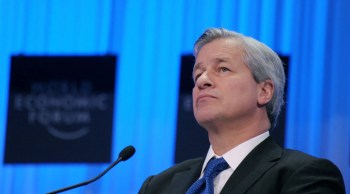The surprising complexity of moving money across borders
People sending messages from the United States to relatives in the Dominican Republic have an array of cheap, instantaneous options, from Skype to email to new forms of phone call.
People sending money, though, are still likely to begin at a place like Daysi Travel: A storefront in the mostly Dominican neighborhood of Washington Heights in New York City selling cell phones at a counter in front and Western Union money transfers at a window in back.
Edrizio de la Cruz used to come to a place like this between college classes and a night shift as a plane mechanic at JFK airport in order to send money to his Aunt Virginia in the Dominican Republic.
“That experience is relatively painful, because you have to take time out of your day, stand in line, fill out a form,” he recalls. At the time, he would pay a fee of at least 10 percent, but what he calls the most painful part was on the other side, in Santo Domingo — waiting for a long-distance phone call with a numerical code, walking to the distant Western Union agent and waiting in an even lengthier line.
He recalls his reaction: “Oh my God. this is like… “The Flintstones.’ ”
In the 15 years since, this messaging part has become simpler.
“The messaging part is now almost free,” says Dilip Ratha, an economist at the World Bank who tracks remittances. “And yet, the average fee is still about 8 percent. Eight percent.”
Eight percent is significantly less than it was 15 years ago, but it still seems too high to Ratha.
“The true cost of sending money is definitely close to zero,” he says. “Or below 1 percent.”
“We hear so much about, you know, ‘This is so important for certain countries, why can’t it be for free?’ ” says Pam Patsley, CEO of MoneyGram, the second-largest money transfer company, after Western Union.
Patsley says MoneyGram’s fees average 5 percent, half of which goes to the 350,000 agents at cell phone stores, banks and travel agencies. MoneyGram’s 2 1/2 percent has to cover not just the sending of messages, but the tens of millions of dollars it is spending each year complying with regulations to fight fraud and money laundering. It must also cover running the system that actually moves money across borders, collecting the cash from the New York travel agency that sent it and paying back the agent in Santo Domingo who received it.
“Your receiver may have picked up their money within an hour. But we won’t pay that receive agent or collect from that send agent until maybe eight hours later,” says Patsley.
This is the part of the money transfer business that hasn’t changed much. It still relies on a process that sends money from bank account to bank account, a chain of account-settling that involves more than 800 accounts in total for MoneyGram.
It’s this tangled web that Edrizio de la Cruz hoped to cut through when he started a company called Regalii right across the street from the Daysi Travel in Washington Heights. But instead of replacing the MoneyGrams and Western Unions, Regalii tries to partner with money transfer companies.
“It’s like: If you want to go to California, you can take a railroad and stop at like 20 different cities — or you can take a jet,” explains de la Cruz. “We’re not taking jets yet, money transfer, we’re taking railroads.”
Regalii rides the rails of the money transfer companies, but cuts out the last station — the Western Union agent in Santo Domingo — making it possible to pay his aunt’s electricity bill directly, for a slightly lower fee.
Like many entrepreneurs in the remittances space, he’s not trying to build a jet — a totally new way to send money across borders — but he is pushing for a slightly faster and cheaper train.
Three facts about remittances:
- The amount of money sent in remittances each year exceeds the GDP of Sweden. Remittances in 2015 are estimated at $586 billion, according to the World Bank; GDP of Sweden in 2014 was $559.1 billion.
- Remittance fees have declined over the last decade, but the average total cost of sending remittances remains relatively high: 7.72 percent in the first quarter of 2015 according to the World Bank.
- Some countries are extremely reliant on remittances. Remittances made up 47.5 percent of Tajikistan’s GDP in 2012. Haiti and Nepal are also high up on the list, with remittances adding up to more than 20 percent of GDP.
There’s a lot happening in the world. Through it all, Marketplace is here for you.
You rely on Marketplace to break down the world’s events and tell you how it affects you in a fact-based, approachable way. We rely on your financial support to keep making that possible.
Your donation today powers the independent journalism that you rely on. For just $5/month, you can help sustain Marketplace so we can keep reporting on the things that matter to you.


















